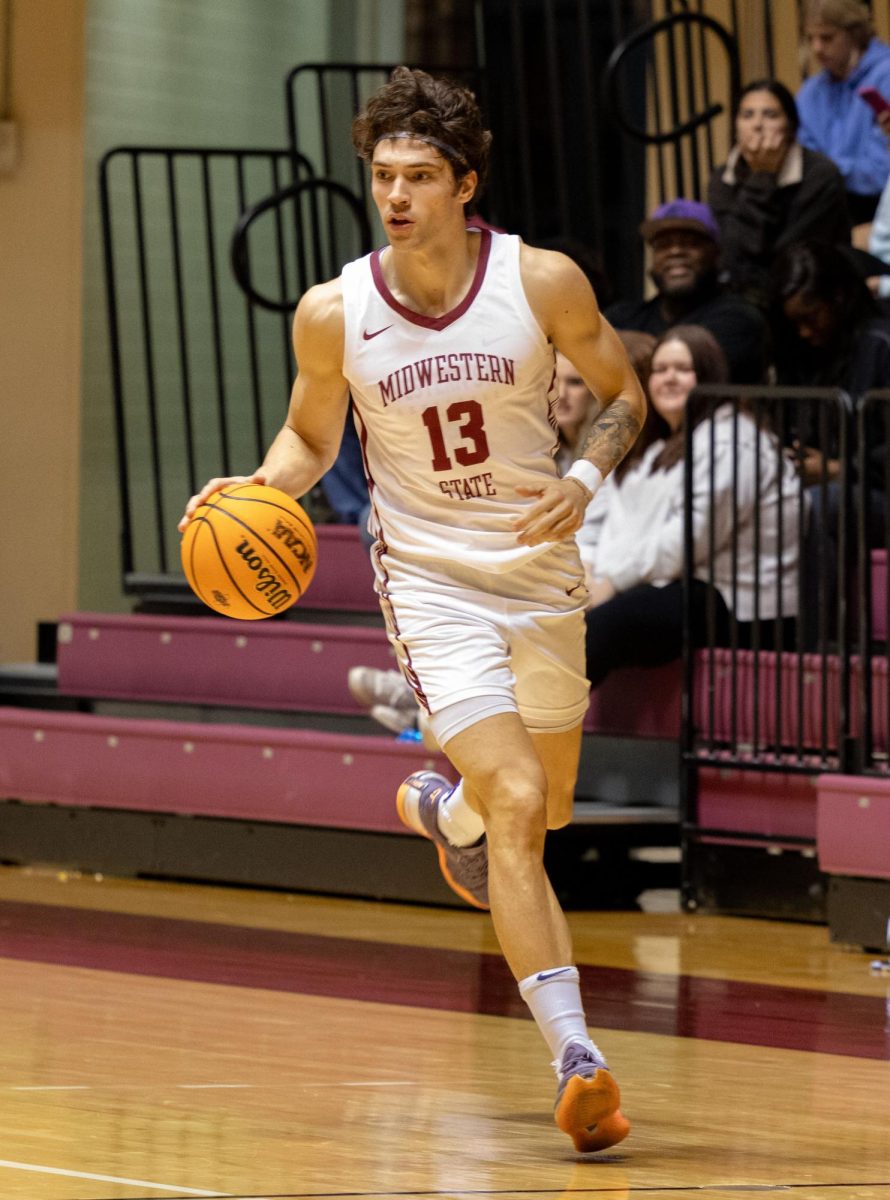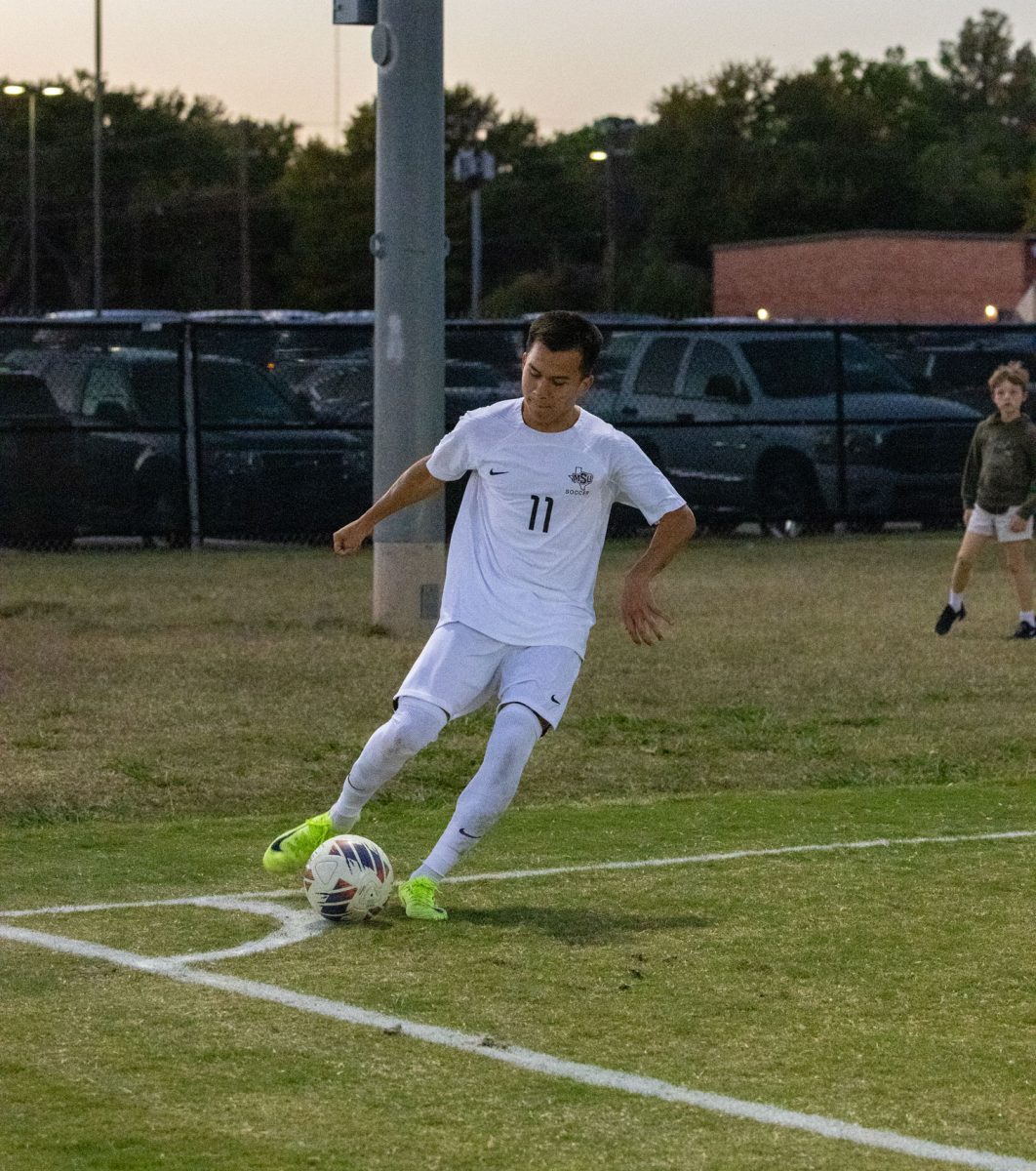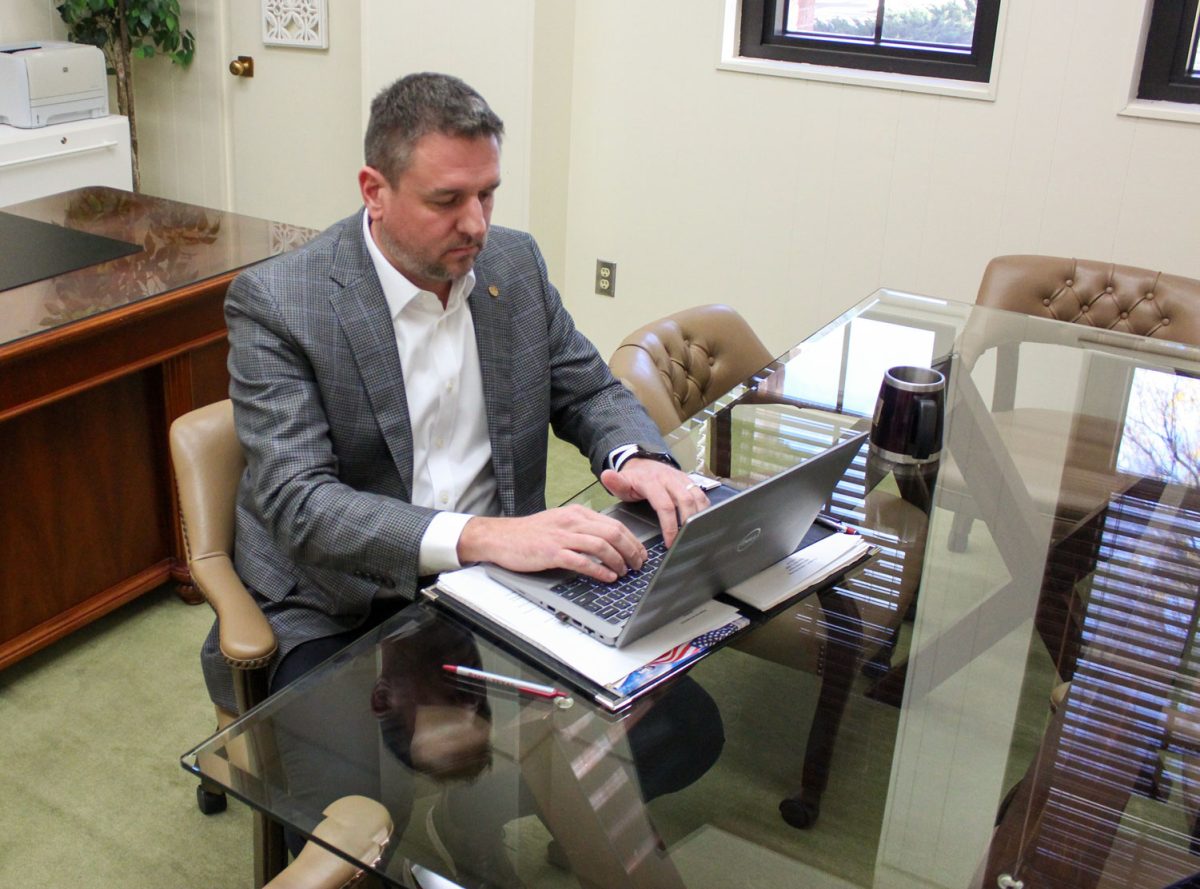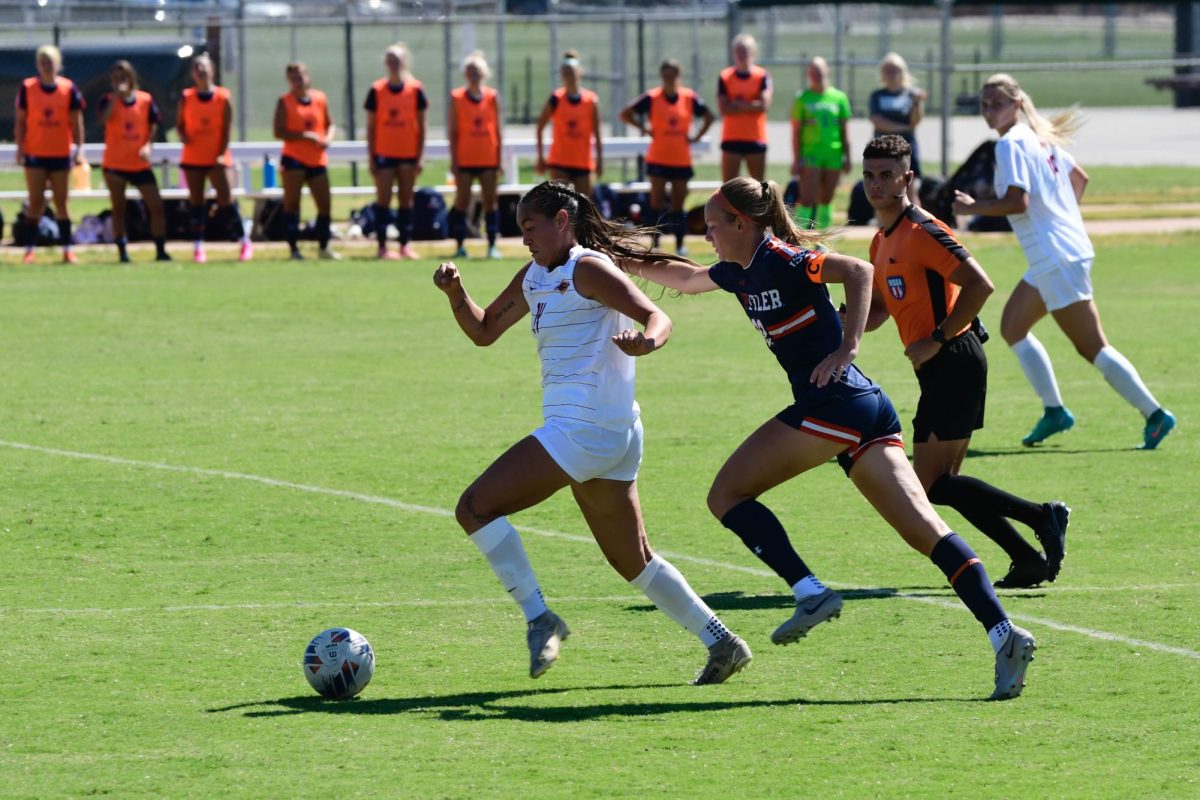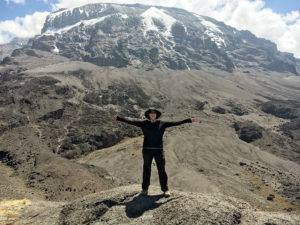
The start of a journey that contains rough terrain, loose rocks, and reasons to quit. Out of breath and losing strength, hikers put one foot in front of the other. Mental strength wills them up the mountain. At the top, lessons are learned, things are left behind, and the hiker returns changed from the experience.
Andrea Hoffman-Watson, alum, went through a very traumatic event- divorce. A year ago she was going through a lot of emotions. Susie Farnie, flight attendant and friend, had hiked Kilimanjaro in 2011 and it was something that kept creeping back into Hoffman-Watson’s head.
“I had a friend that did that in 2011 [hiked Kilimanjaro] and it’s one of those things that resonated with me but at the time that would never have been something that I could have done. It would have been a waste of time, a waste of money and it would have been too complicated,” Hoffman-Watson said. “Of course, when everything happened with the divorce I just kept landing on it. I pushed that thought away. I wasn’t in great shape. There really was nothing to say, ‘I’m a mountain climber.’”
After dismissing the thought for a while, she started to remember the things she used to do and the hike didn’t seem so impossible and crazy.
“It became more of a, ‘It seems a little crazy now, but maybe it is something we can work towards,’” Hoffman-Watson said.
Hoffman-Watson started researching everything she could find whenever she had any free time. She consulted her friends, hours of online research and watching videos of others’ treks up the mountain.
“I started researching for hours and hours online. I looked at a lot of YouTube videos people had posted of their own treks,” Hoffman-Watson said. “Researching routes. Getting paperwork in line. Getting financials in line and just chipping away at it over the course of a year.”
With a goal in mind, she went to Walmart to look at what gear they had, and tried to figure out what she needed.
“I was at Walmart trying to figure out what I needed to take, because there’s the concern about bringing too much gear. There’s weight allowances, but you need to have your basics because you’re in the middle of nowhere,” Hoffman-Watson said. “It could be that stupid little thing that you left is absolutely what you need.”
Hoffman-Watson called Farnie to get her advice on gear while there.
“I remember wandering around the aisles at Walmart in the outdoor section just talking to her, trying to get a little bit of an idea what I should get, what she took, what she brought along that she didn’t need versus ‘man, I really wish I had brought… fill in the blank,’” Hoffman-Watson said.
Farnie was extremely excited about Andrea’s decision to hike Kilimanjaro.
Farnie said, “I’m so proud of your [Hoffman-Watson] decision to do something great… it truly is an amazing experience, like no other from start to finish.”
The preparations were a major part of the trip and important to know what you’re getting into taking on an event like this.
“There was coordinating everything. Seeing which climbing company you would go through because you have to go through a company. You can’t just go by yourself so that’s a legal requirement,” Hoffman-Watson said. “There’s about a million different companies and the service levels vary greatly and the price range varies greatly. This one [Zara climbing company] was more middle of the road, so nothing crazy or over the top, so you didn’t have the concerns of them being so cheap that they were cutting every corner.”
Hoffman-Watson learned a lot from the horror stories of those who didn’t properly prepare for the trip.
“You have horror stories of people that go to embark on this great adventure. They get over there and they go with some cut-rate provider and day one or two you’re out with some sort of illness or something like that and your whole trip is ruined,” Hoffman-Watson said. “You want to make sure you go with somebody reputable.”
Planning the flight, where to stay, when to go are all things to consider on a trip like this. If someone planned a cheaper flight, they might run the risk of being conned out of their money in a foreign country.
“You start looking at the prospects of flying into Nairobi, Kenya [because it’s cheaper] and then busing down but then you hear horror stories about the Kenya-Tanzania border crossing where basically they will unload you from the bus, you’re on your own, and there’s all sorts of con-men that will tell you that you have to pay all these extra fees,” Hoffman-Watson said. “It’s a very tough crossing if you are green to that. You have to navigate that crossing yourself. There’s not a lot of instruction and then the bus picks you up on the other side.”
After settling on the Lemosho route, Hoffman-Watson placed her deposit on the trip, which she said was a very weird day for her.
“I remember I was at lunch because at that point, before work, after work, on lunch, whatever, if it was just me I was researching something and so I pulled the trigger and put down the deposit. I went back to work and it was just the weirdest feeling like this is really happening,” Hoffman-Watson said. “It went from ‘I should work on this’ or ‘I’m going to do this someday’ to ‘I have actual dates.’”
The flight to Kilimanjaro International Airport is about 24 hours total with stops along the way.
“You are mostly bouncing off the eastern seaboard, Europe, and then down, so my flight was around 24 hours.”
Day to Day:
• Sept. 15- Arrived at Kilimanjaro International Airport and shuttled to hotel in Moshi, Tanzania.
• Sept 16- Went to a local market in Moshi and visited a local neighborhood where Hoffman-Watson drank coffee at a one room coffee shop, played with school children and observed people in traditional clothing. She bought children candy at a shop and walked back to her hotel on elevated train tracks the way the natives do.
• Sept 16- Hoffman-Watson had a briefing session with Chombo, her guide and she met most of the group she would be hiking with. That evening at the hotel a group had just come back from summiting and had a large party.
• Sept. 17- The hiking group loaded up, checked their weight allowances and headed to their starting point. It was a four hour drive to the western side of the mountain from the hotel. They arrived at the Londorossi Gate, signed in and ate lunch. From there they drove for an hour to arrive at the Lemosho Gate which was the start of the trail they took.
• Sept. 17- Hoffman-Watson and the group started the hike in a very jungle-like environment and the start of the trail was steep. They hiked for four hours to reach their first camp for the night at Mkubwa Camp. Their porters [people assigned to accompany each hiker to hold their extra gear] carried most of the gear and hiked the mountain in thin shoes. They had to consume at least 3 liters of water per day and eat a lot as altitude sickness will make them their appetite. The group covered seven kilometers that day full of ups and downs. Sleeping the first night was hard because the monkeys in the area were yelling all night.
• Sept. 18- Hoffman-Watson and the group hiked for seven hours climbing rocks and boulders. They passed many valleys. They arrived at their next camp [Shira I]. This camp is at the base of the Shira plateau and out of the tree line. They saw their first view of the mountain from this camp. Breathing and drinking while walking is started to become difficult due to the altitude. Hoffman-Watson had a sick porter and someone had to go back for part of her gear. That night they had almost a full moon, and could see the Milky Way and millions of stars.
• Sept. 19- Hoffman-Watson and the rest of her group crossed all of the Shira Plateau [3,850 meters] to get to their next camp at Shira II. From the Shira II camp, they got their first glimpse of Mt. Meru, which is a neighboring volcano. Cairns [human-made pile of rocks used to mark that others visited before] were visible. Porters were playing soccer while the hikers staying there were getting winded closing their zippers.
• Sept. 20- The guides planned for hiking 10 kilometers in six hours and it took a little longer than that. It was 4,600 meters to the lava towers where they had lunch. They came to Barranco Camp for the night [3,900 meters]. Hoffman-Watson’s legs were starting to spasm so she did very minimal exploring.
• Sept. 21- The group hiked to the top of the Barranco Boulder which was 300 meters up. It took the group two hours to reach the top. The trails were tough on this day and although Chombo pointed out their camp, which looked close, there was a large drop-off between them and camp which added another hour and a half to the journey. With breathing becoming more difficult, they arrived at Karanga Camp. Hoffman-Watson was starting to doubt herself and her group was encouraging her to continue. She saw a beautiful sunset from Karanga Camp. The altitude is making sleep very hard and Hoffman-Watson’s legs are wanting to give out on her. She chanted her daughters’ names with every step she took. She decided to wait until morning and take a few steps before making the decision to stop.
• Sept. 22- Hoffman-Watson and her hiking group went to Barafu Camp [base camp] which is four hours away from Karanga Camp, hiking through rough terrain. There was another very large drop off between them and the next camp. From Barafu Camp they could see Mt. Mawenzi. They set up their tents, ate and were briefed about their summit day by Chombo. They were told to wear everything they owned and carry a large mouth water bottle because their water pack lines would freeze. The rested for three hours, got up, ate and prepared for their last push to summit at midnight. Hoffman-Watson couldn’t catch her breath even laying down and had to calm herself because she felt her body panicking.
• Sept. 23- Hoffman-Watson is experiencing leg failure. She doesn’t know how she will make it. She is getting nervous. The terrain is loose dirt and rocks, so for every step forward, it felt like two steps back. For Hoffman-Watson it was a battle. Her daughters were a constant source of inspiration for her. She summited at Stella Point after nine hours of fighting to get there. In total she hiked to a height of 18,885 feet. To put this in perspective, the cruising altitude of Hoffman-Watson’s plane home was 18,000 feet.
• Sept. 23- Immediately after summiting she was hurried back to Barrafu Camp in two hours 34 minutes. Hoffman-Watson saw porters running people who had become unconscious from the mountain while she was summiting. Hoffman-Watson decided that she would stop there while the rest of her group continued up to Uhuru Peak which is the highest summit at 19,341 feet [.7 kilometers from Stella Point]. At Barafu Camp, Hoffman-Watson packed her gear and they went as a group to Mweka Camp for the night.
• Sept. 24- The group left Mweka Camp and in four hours they were at Mweka Gate to catch the shuttle home. From Mweka Gate to the Hotel was 30 minutes. In total, Hoffman-Watson and her group covered 22 kilometers and hiked for 19 hours.
Hoffman-Watson’s inspiration to summit Kilimanjaro was the proof that she could achieve this and to be able to look her daughters in the eyes and tell them what she accomplished.
“[What kept Hoffman-Watson going] my girls. I wanted to be able to tell them that I had done this because they didn’t know at the time where I was,” Hoffman-Watson said. “I wanted to prove it to myself. Part of that was following the divorce that I’ve got this. If I can do that, I’ve got this so it was to prove to myself that no matter how hard a challenge is that I can work through it and get it done.”
Kilimanjaro Facts:
• It is the tallest mountain on the African continent.
• It is the highest free-standing mountain in the world.
• Its’ highest elevation is 5,895 meters or 19,341 feet.
• It is the highest volcano outside of South America.
• It has three volcanic cones: Mawenzi, Kibo and Shira.
• The Shira Plateau is 3,800 meters or 12,500 feet.
• National forests cover 1,000 square kilometers or 250,000 acres
• Animals present include: monkeys, lions, zebras, hyenas, cape buffalos, mongooses and elephants
• There are six official routes on the mountain used to ascend: Machame, Marangu, Shira, Umbwe, Rongai and Lemosho. There is one route used to descend the mountain: Mweka.
• Approximately 25,000 people try to summit Kilimanjaro every year. The most common reason they fail is due to altitude sickness.







